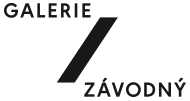klaus staudt
born 1932, Otterndorf, Germany
Klaus Staudt at his studio
The exhibition was closed on 2nd of November 2022.
Klaus Staudt, born in 1932, has been one of the most important representatives of concrete art for decades.
His relief works, which are principally based on the structure of a grid and consist of individual elements, gain their depth and optical transparency through the action of light. The light reflects off the individual segments and is perceptible to the viewer, the structure of the grid itself slowly maturing into an aesthetic and deliberately conceived unit.
This artistic strategy was already used and expanded in the 1960s in many European countries. The grid as a formal base also appeared in attempts to move objects, and can be seen as the basis of some variants of kinetic art. In Munich, Staudt used to work closely with his colleague Gerhard von Graevenitz /1934 - 1983/, but he himself never took the step towards actually moving his works, i.e. towards kinetics.
Nevertheless, it is possible to perceive a movement component in his grid structures. Changing lighting conditions or the viewer's movement in front of the reliefs can also be understood as a visual change in the grid structure. However, this internal instability of the grid is merely an optical illusion. The grid itself is a clearly structured area, usually made up of the same elements. These are fixed to the support plate in such a way that they serve as a structural base for the resulting grid. Staudt used various elements to form the grid throughout his career. The most typical is the element based on the division of a cube. The sharp edges and the plane created by the separation from the whole form segments that modulate light and allow the movement of the grid to be visually perceived.
Staudt's raster reliefs are almost exclusively white. This color reflects light best and does not distract from the form of the structure. The artist also tried using coloured Plexiglas faces to bring colour to his reliefs. In these realisations, however, it must be taken into account that the elements forming the grid structure are not usually created in colour. The colour accent comes from the surface of the glass and is therefore not a constitutive element of the grid.
Klaus Staudt's skill with colour is best seen in a series of drawings he made during a residency at the Josef and Ania Albers Foundation in the USA. The structures are "abstracted" from the grid, which the viewer does not perceive as an artistic substance. The gaps between the elements of the grid are multiplied and individual directional vectors - horizontal and vertical - can be observed.
Staudt has succeeded in creating an extremely diverse and formally varied work that is formally based on the existence of raster structures, which the artist uses in a sophisticated way.
Hans-Peter Riese







